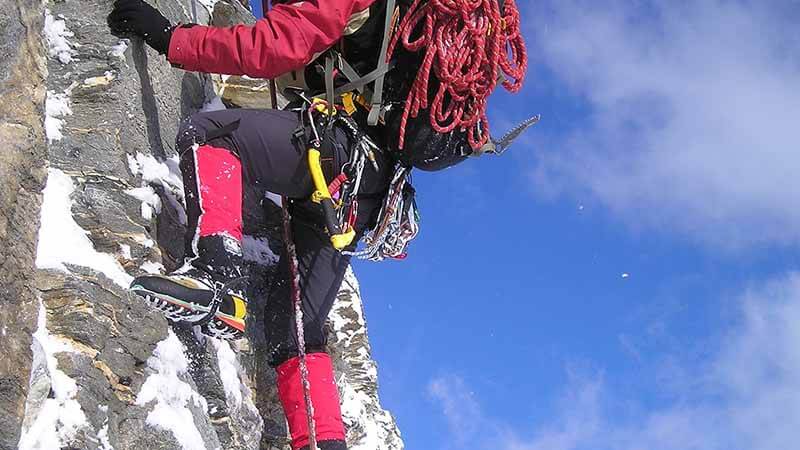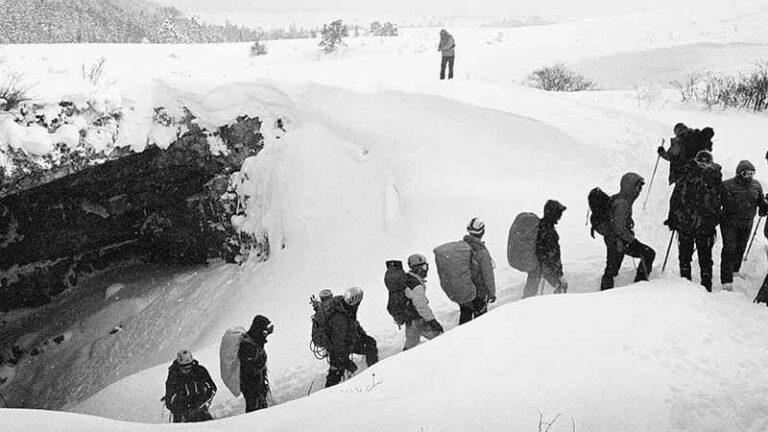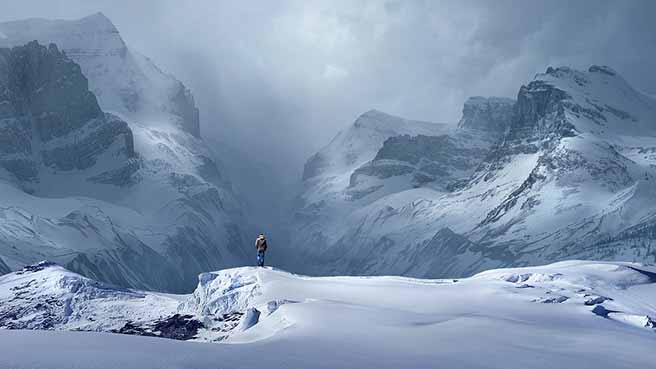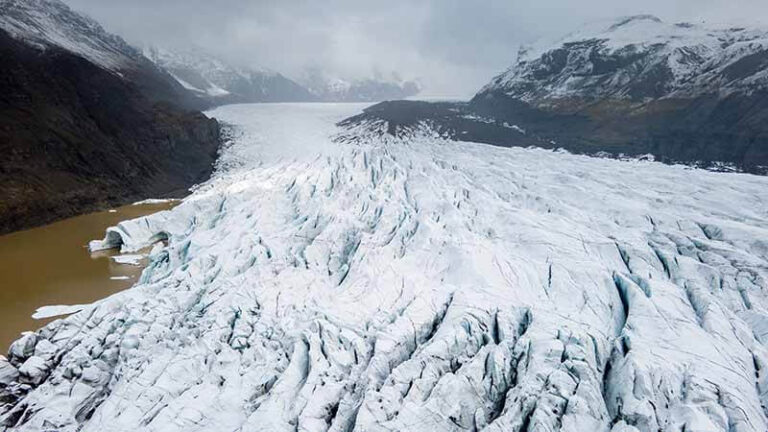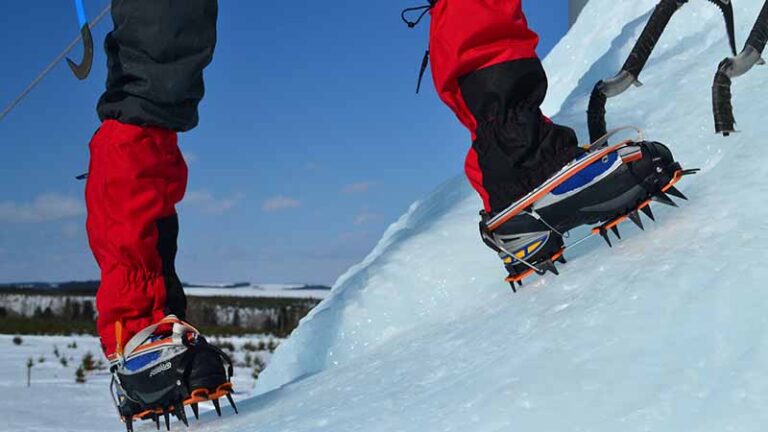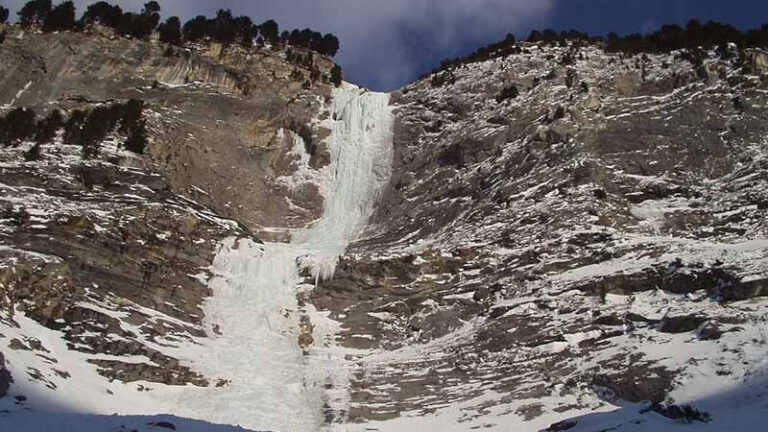Is Ice Climbing a Good Workout?
Ice climbing involves mounting frozen waterfalls, ice-covered rock faces, and other icy terrain with specialized equipment such as ice axes, crampons, and ropes. It is a physically and intellectually demanding sport that needs considerable strength, endurance, and technical ability. Ice climbers usually work in couples, with one person leading and the other following and belaying or supporting the leader. Ice climbing can be done both outdoors and indoors on natural ice formations.
Ice climbing has numerous physical and mental advantages. Physically, ice climbing is a great full-body workout that works the upper body, lower body, and core muscles. Climbing ice formations involves tremendous strength, endurance, and flexibility, which helps to improve cardiovascular health, muscular endurance, and general fitness. Ice climbing can also increase balance, coordination, and proprioception, as well as grip strength and dexterity.
Ice climbing may be a mentally stimulating and inspiring activity. Climbing necessitates considerable concentration and focus, as well as the capacity to manage fear and anxiety. As climbers overcome severe hurdles and push their boundaries, ice climbing can create a sense of satisfaction and self-confidence.
Is Ice Climbing a Good Workout?
Ice climbing may be a great workout that challenges the entire body. Upper body, core, and leg strength are required, as well as balance, endurance, and flexibility. Climbing on ice also works the grip strength, forearms, shoulders, hips, thighs, and calves. Furthermore, ice climbing requires tremendous cardiovascular work since climbers must keep a constant pace while navigating difficult terrain.
As a result, ice climbing might be an ideal alternative for an adventurous and tough workout that targets numerous muscle groups and increases overall fitness. To maintain safety and prevent injuries, it is critical to acquire proper training, wear appropriate gear, and climb with experienced partners.
Benefits of Ice Climbing
Cardiovascular Benefits
Because it takes a lot of effort and energy to climb ice, it can be a fantastic cardiovascular workout. It raises the heart rate, which promotes blood flow to the muscles and other organs and aids in the expansion of lung capacity. This improves overall cardiovascular health and may reduce the risk of heart disease, stroke, and other cardiovascular problems.
Strength Training
Ice climbing is an excellent approach to increasing strength and endurance, particularly in the upper, lower, and core muscles. Climbing up the steep ice structures takes extensive use of the arms, shoulders, back, and legs. Maintaining balance and body control also necessitates strong core stability. Ice climbing can help to increase general physical strength and endurance by using these muscles on a regular basis.
Mental Benefits
Ice climbing can increase focus, concentration, and problem-solving abilities, among other things. Climbers must retain attention and focus while navigating difficult terrain. To prevent risky circumstances, they must also be able to problem-solve and make quick decisions. These abilities can be transferred to other aspects of life, such as work, school, and daily activities, and can aid in the improvement of general cognitive function.
Improved Balance and Coordination
Climbers must carefully regulate their body movements to keep balance on the slick ice, which requires a tremendous level of balance and coordination. This improves overall balance and coordination, lowering the chance of falls and other injuries. Improved balance and coordination can also help with other activities like sports, dance, and other physical pursuits.
Caloric Expenditure
Comparison with Other Forms of Exercise
Ice climbing is a physically difficult sport that demands a lot of energy and effort. As a result, it can burn a significant quantity of calories while also providing wonderful exercise. Ice climbing, when compared to other forms of exercise, can be more strenuous and burn more calories per hour than sports such as jogging, cycling, or weightlifting.
A person weighing 150 pounds, for example, can burn around 408 calories in 30 minutes of ice climbing, compared to 238 calories in 30 minutes of moderate-intensity cycling or 270 calories in 30 minutes of weightlifting, according to the American Council on Exercise.
Studies on Caloric Expenditure
There has been little research on the calorie expenditure of ice climbing, but little has been done. According to one study published in the Journal of Strength and Conditioning Research, skilled ice climbers burnt 557 calories per hour on average when climbing, with some individuals burning up to 900 calories per hour. Another study published in the journal Wilderness and Environmental Medicine discovered that inexperienced climbers burnt 478 calories per hour on average when climbing.
It’s crucial to remember that the quantity of calories burnt while ice climbing depends on a variety of factors, including the climber’s weight, level of exercise, and the difficulty of the climb. Furthermore, because ice climbing involves a large amount of energy and stamina, climbers should come prepared with appropriate diets and fluids to keep their energy levels up during the exercise.
Safety Considerations
Risks of Ice Climbing
Ice climbing is a dangerous sport that includes ascending steep, icy terrain that can be unstable and unexpected. Ice climbing risks include falls, avalanches, hypothermia, frostbite, and other ailments. Furthermore, the activity occurs in remote and secluded locations, making rescue and medical treatment difficult to obtain in the event of an emergency.
Importance of Proper Training and Equipment
To reduce the risks connected with ice climbing, suitable training, and equipment are required. Before attempting to climb, climbers should acquire proper teaching and training on methods, safety precautions, and emergency procedures. They need also to have the correct equipment, such as ice axes, crampons, ropes, harnesses, helmets, and other safety gear, and know how to use it.
Climbing with a partner or in a group can also provide additional safety precautions and help in the event of an emergency. Climbers must effectively communicate with one another and be prepared to aid one another in the event of a fall or other disaster.
Climbers should also be mindful of weather conditions and potential hazards, such as unstable ice formations or avalanche-prone places, and be prepared to modify their preparations as needed. They should also dress appropriately for the weather and have enough resources, such as food, water, and emergency supplies, to ensure they are prepared for any unforeseen events.
How to Get Started
Finding a Guide or Mentor
Those who want to try ice climbing should first find a guide or mentor who can provide suitable education and direction. Ice climbing is a difficult and rigorous exercise that demands specific skills and expertise, so thorough training is required before attempting to climb.
Searching online or through local climbing groups might help you find a reputable guide or mentor. It is critical to select someone with expertise, understanding, and training in safety protocols and emergency response.
Required Equipment
Ice climbing necessitates the use of specialized equipment such as ice axes, crampons, ropes, harnesses, helmets, and other safety equipment. To ensure safety and the best performance, it is critical to invest in high-quality equipment built expressly for ice climbing.
Also, dress correctly for the weather and environment, with layers of warm, moisture-wicking clothing, insulated boots, and gloves. Climbers should also have enough resources with them, such as food, water, and emergency supplies.
Basic Techniques
Learning basic ice climbing methods, such as good foot and hand placement, the use of ice axes and crampons, and the use of ropes and harnesses for safety, is crucial. Climbers need also to learn to evaluate the safety of ice formations and the environment, as well as be aware of potential hazards such as unstable ice or avalanche-prone places.
It is critical, to begin with easy climbs and move to more challenging routes as your skills and confidence increase. Climbers should also be prepared to change their strategies in response to changing conditions.
Conclusion
Finally, ice climbing can be a great workout that offers a number of physical and mental benefits. Ice climbing has considerable cardiovascular advantages since it involves sustained effort and can raise the pulse rate, which improves cardiovascular endurance. Ice climbing also gives full-body strength training, targeting muscles all over the body such as the arms, legs, back, and core.
Ice climbing is also good for your mind because it demands focus, concentration, and problem-solving skills to negotiate the terrain and analyze safety threats. Climbing in the outdoors may also be contemplative and stress-relieving.
While the actual caloric expenditure of ice climbing varies depending on factors such as the climber’s weight and the intensity of the climb, studies have shown that it can burn a large number of calories while also providing a challenging workout.
However, ice climbing is an inherently dangerous sport that necessitates proper training, equipment, and safety precautions to reduce the risks involved with the sport. Climbers should be aware of the potential hazards and take proper steps to safeguard their and their companions’ safety.
Overall, ice climbing may be a tough and rewarding activity that gives a full-body workout as well as mental advantages; nevertheless, it is critical to approach the sport with prudence and sufficient preparation. Ice climbing can be a wonderful workout and a thrilling adventure if you have the correct mindset, training, and equipment.

